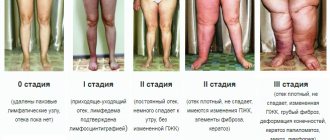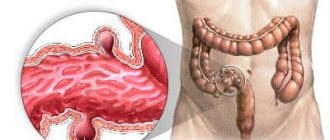Cat scratch disease, or otherwise felinosis, benign lymphoreticulosis, Mollare granuloma, is an infectious disease caused by the bacterium Bartonella henselae. The microbe enters the body of cats after a flea bite, as well as when ingesting infected parasites or their excrement. Lives in the blood, saliva, urine and on the paws of pets. Why are cat scratches dangerous?
Sometimes a furry pet can reward not only affection, but also a very unpleasant disease. Felinosis in humans occurs as a result of a bite or deep scratches from cat claws. Less commonly, infection occurs through the respiratory tract or gastrointestinal tract.
At risk are children, the elderly, or those who have recently suffered a serious illness. In short, everyone who has a weakened immune system. The disease is not transmitted from person to person. The incubation period from infection to the onset of symptoms usually lasts from 3 to 20 days.
Symptoms of cat scratch disease
Symptoms of cat scratch syndrome in humans:
- inflammation of the lymph nodes;
- fever;
- malaise;
- headache.
More rare symptoms are also possible - diseases of the eyes, skin, nervous system disorders and damage to internal organs.
If a cat scratch becomes inflamed and a nodular formation, a papule, forms in its place, there is a possibility that adenitis will follow, that is, inflammation of the lymph nodes. They become immobile, painful and increase in size. All this is accompanied by high temperature.
Dangerous claws
When playing with your favorite fluffy, anyone can get a small scratch or bite from him. Often, people do not attach much importance to such minor damage to the skin, but the bacterium Bartonella (Bartonellahenselae), which lives in the mouth of the mustache, can enter through an open wound.
Bartonella is classified as a class of chlamydia, and when this microbe “settles in” in the environment it needs (for example, in the human body), it brings serious trouble to the patient.
The initial carriers of the disease are microparasites, namely fleas, in which the microbe lives in the intestinal environment. When they fall on one of the fluffies, they infect him through a bite. This type of microscopic insect is not dangerous to humans.
According to statistics, about 50% of mustaches live with the microbe for 3-4 years, without knowing it, since the disease rarely manifests itself as symptoms. Bartonella is found in felines in urine and saliva, so it easily gets on your pet’s claws.
How to avoid this disease
First of all, you should pay more attention to your pet from its childhood. While training for dogs is very common, owners train cats much less often. This, of course, can be explained by the nature of the cat as a species and the fact that it is not very trainable. However, without regular games and activities, the cat may begin to show aggression.
The owner should have a variety of toys in his arsenal. From childhood, it is necessary to accustom these animals to the rules of family life, so that later you do not encounter the fact that they scratch not only sofas and walls, but also the inhabitants of the house. Learn about cat training techniques from the experts at Hill's.
There are several basic preventive rules:
- periodically treat your cat with flea products;
- never pet street animals;
- If a cat is playing and wants to attack, you cannot shout at it or use force.
Cat scratch disease can only be diagnosed in a hospital based on test results. The symptoms are similar to many other diseases, so you should consult a doctor at the first sign.
Treatment
For people with a normal immune system, local therapy (warming the affected lymph node in the absence of suppuration!) and symptomatic treatment are usually sufficient.
As a rule, it is sufficient to prescribe (and then only if necessary) antipyretic and mild painkillers - usually from the NSAID group.
Most patients with mild to moderate disease do not require antibiotics. However, people who are immunocompromised, particularly those with HIV infection, are usually prescribed antibiotics.
If the doctor nevertheless decides to prescribe antibacterial treatment to the patient (and this, I repeat, is necessary only in rare cases in people with a normal immune system), then azithromycin (a first-line drug) or doxycycline with rifampicin is usually used.
In patients with HIV infection with bacteremia (detection of Bartonella henselae in the blood), treatment can be more complex and often very long (from several weeks to several months).
Patients with atypical forms of felinosis also require a special approach (with the exception of granulomatous conjunctivitis/oculoglandular Parinaud syndrome, which is treated as standard).
In cases where the patient has CNS damage (encephalitis, meningitis, etc.), neuroretinitis, granulomatous hepatitis and splenitis, a combination of drugs (usually doxycycline with rifampicin in adults or rifampicin with azithromycin/biseptol in children) is required for a long period (1-2 month). But this decision can only be made by an experienced doctor.
If a lymph node suppurates, it may need to be drained (suction of its contents with a syringe).
What to do if a cat bites or scratches
First of all, you need to wash the wound and then disinfect the area with hydrogen peroxide. It kills all pathogenic bacteria. After this, you can treat the wound with iodine and carefully monitor healing.
If the scratch is from a pet that is constantly being watched and cared for, the scratch will probably go away on its own. If it was a yard or unfamiliar cat, it is better to immediately consult a doctor to prevent complications.
No disease will prevent you from loving furry beauties - love, proper upbringing, timely flea prevention and maintaining cat hygiene will solve all problems.
Diagnostics
If a pet has damaged the skin with a claw or bitten, and suppuration has formed at this site within 2 days, then this is not felinosis, but most likely the infection occurred with streptococci or staphylococci, possibly fungi (although it would not be superfluous to have it checked by an infectious disease specialist).
Felinosis begins to signal itself when the wound has healed and a hard crust has formed (perhaps it will already fall off).
If the lymph nodes are swollen, you will need to consult an infectious disease specialist. The following types of studies will help confirm suspicions about felinosis:
- PCR (polymerase chain reaction) - to recognize Bartonella particles;
- histological method - careful examination of tissues under a microscope;
- a general blood test is necessary not to confirm the disease, but to determine its severity (if the ESR is accelerated and the total number of eosinophils is increased, then it is strongly expressed).
If the illness lasts 3-4 weeks, then they will probably do a skin allergy test (injecting a solution with a microbe under the skin). Then redness and swelling will appear in the bitten or scratched area - this will confirm Bartonella infection. This test is not suitable for children.
To determine the size of the liver and spleen, a specialist will prescribe an ultrasound. If these organs become enlarged, the patient will be prescribed bed rest.
Magazine "Child's Health" 4 (25) 2010
Cat scratch disease (synonyms: benign lymphoreticulosis, non-bacterial regional lymphadenitis; Latin lymphoreticulosis benigna; English cat - scratch disease, cat - scratch fever; German Katzenkratzkrankheit; French la maladie des griffes du chat) is an infectious disease that develops through contact with infected cats with scratches and bites.
Etiology
A. Debreu and K. Foshay (1932), then V. Mollaret et al. (1950) described benign lymphadenopathy that occurred after scratching cats. The causative agent of the disease was initially considered to be a virus, in 1963. IN AND. Chervonsky et al. attributed it to the chlamydia group. In 1983 in the USA P. Yep et al. established its belonging to Rickettsia. Later, the pathogen was isolated into a separate genus Rochalimea, named after the famous Brazilian rickettsiologist E. da Roja-Lima. It turned out to be a small gram-negative rod that requires special media for growth. The rod can be found in preparations stained with silver (in the walls of capillaries, in macrophages, in skin biopsies, in lymph nodes). The causative agent of cat scratch disease (Afipiafelis) is antigenically different from Rickettsia, Bartonella, Brucella and other microorganisms [1–3].
Epidemiology
The disease is common in all countries. In the United States, there are 6.6 cases per 100,000 population per year. Seasonality is higher in the winter months (66%), children and people under 20 years of age are more often affected (80–85%). Familial outbreaks are observed (about 5% of all diseases). 95% of patients report contact with a cat (scratches, bites, licking). Sometimes cat saliva gets on the conjunctiva, which leads to the development of ocular forms of the disease. The source and reservoir of infection are only cats; the disease is not transmitted from person to person [2, 3].
Pathogenesis
The portal of infection is the skin of the extremities, less often - the face, head, neck, and sometimes the conjunctiva of the eyes. The pathogen penetrates through damaged skin (bites, scratches or microtraumas existing before contact with the cat). An inflammatory reaction develops at the gates of infection. Then, along the lymphatic tract, the pathogen reaches the regional lymph node, where inflammation also occurs. There are three stages of development of inflammation in the lesions: in the early stage - reticulocellular hyperplasia, then granulomas are formed and in a later period microabscesses are noted. Subsequently, the pathogen penetrates into the blood, hematogenous dissemination of the infection occurs, which is manifested in the appearance of exanthema, enlargement of the liver and spleen, damage to the myocardium, and sometimes to other lymph nodes not associated with the portal of infection. After an illness, stable immunity develops [4–6].
Clinic
The incubation period lasts from 3 to 20 days (usually 7–14 days). According to clinical manifestations, one can distinguish typical forms (about 90%), manifested in the appearance of primary affect and regional lymphadenitis, and atypical forms, which include: a) ocular forms; b) damage to the central nervous system; c) damage to other organs; d) cat scratch disease in HIV-infected people. The disease can occur in both acute and chronic forms.
A typical disease begins, as a rule, gradually, with the appearance of a primary affect. In place of a scratch or cat bite that has already healed by then, a small papule appears with a rim of skin hyperemia, then it turns into a vesicle or pustule, and later into a small ulcer. Sometimes the abscess dries out without forming an ulcer. Primary affect is often localized on the hands, less often on the face, neck, and lower extremities. The general condition remains satisfactory. 15–30 days after infection, regional lymphadenitis is observed - the most constant and characteristic symptom of the disease. Sometimes this is almost the only symptom. An increase in body temperature (from 38.3 to 41°C) is observed in only 30% of patients. Fever is accompanied by other signs of general intoxication (general weakness, headache, anorexia, etc.). The average duration of fever is about a week, although in some patients it can last up to a month or more. Weakness and other signs of intoxication last on average 1–2 weeks.
The elbow, axillary, and cervical lymph nodes are most often affected. Some patients (about 5%) develop generalized lymphadenopathy. The sizes of enlarged lymph nodes often range from 3 to 5 cm, although in some patients they reach 8–10 cm. The nodes are painful on palpation and are not fused with the surrounding tissues. In half of the patients, the affected lymph nodes suppurate with the formation of thick yellowish-greenish pus, which cannot be isolated when cultured on ordinary nutrient media. The duration of adenopathy is from 2 weeks to one year (on average about 3 months). Many patients experience enlargement of the liver and spleen, which persists for about 2 weeks. In some patients (5%), exanthema appears (rubella-like, papular, erythema nodosum type), which disappears after 1–2 weeks. The typical clinical form accounts for about 90% of all cases of the disease.
Ocular forms of the disease are observed in 4–7% of patients. In their manifestations, these forms resemble Parinaud's oculoglandular syndrome (Parinaud's conjunctivitis). It probably develops as a result of saliva from an infected cat coming into contact with the conjunctiva. As a rule, one eye is affected. The conjunctiva is sharply hyperemic and edematous; against this background, one or more nodules appear that can ulcerate. The lymph node located in front of the earlobe significantly enlarges (reaching a size of 5 cm or more), the lymph node often suppurates, and the duration of lymphadenopathy reaches 3–4 months. After suppuration and formation of fistulas, cicatricial changes in the skin remain. Sometimes not only the parotid but also the submandibular lymph nodes become enlarged. The acute period of the disease is characterized by severe fever and signs of general intoxication. Inflammatory changes in the conjunctiva persist for 1–2 weeks, and the total duration of the oculoglandular form of cat scratch disease ranges from 1 to 28 weeks [7–9].
Changes in the nervous system are observed in 1–3% of patients. They manifest themselves in the form of encephalopathy, meningitis, radiculitis, polyneuritis, myelitis with paraplegia. Neurological symptoms are accompanied by high fever. They appear 1–6 weeks after the onset of lymphadenopathy. Neurological examination reveals diffuse and focal changes. There may be a short-term disturbance of consciousness. Cases of coma have been described. Thus, lesions of the nervous system develop against the background of classic clinical manifestations of cat scratch disease (in severe cases of this disease). They can also be considered complications of this disease [10].
Other complications may also occur: thrombocytopenic purpura, primary atypical pneumonia, splenic abscess, myocarditis.
In HIV-infected people, cat scratch disease occurs with the development of peculiar vascular lesions (bacillary angiomatosis and bacillary peliosis). Along with the typical manifestations of cat scratch disease, skin changes appear due to damage to the subcutaneous and intradermal vessels. These changes can sometimes mimic Kaposi's sarcoma. Clinically, this manifests itself in the form of various sizes of angiomas or hemorrhages in the skin. Histological examination reveals multiple expansion of capillaries, lobular proliferation of capillaries with obesity of endothelial cells growing into the lumen of blood vessels, and the appearance of necrosis in the center of vascular lesions. The appearance of these skin changes indicates the generalization of the infectious agent, which manifests itself in damage not only to the regional, but also to other groups of lymph nodes [11, 12].
Diagnosis of the classic forms of cat scratch disease is not very difficult. Contact with a cat (in 95% of patients), the presence of primary affect and the appearance of regional lymphadenitis (usually after 2 weeks) in the absence of reaction of other lymph nodes are important [11–13].
A girl, V., was under our supervision; she was admitted to the clinic at the age of 11 years with benign lymphoreticulosis (cat scratch disease) and long-term low-grade fever.
Upon receipt of a complaint of pain in the left armpit, temperature increased to 37.2 °C for 2 months, general weakness, poor appetite. From the anamnesis it is known that she was born full-term, weighing 3,700 g, with an Apgar score of 8–10 points. She was breastfed and did not get sick until she was 5 years old. Since birth he has lived in the same apartment with a cat. About 2.5 months ago she suffered from the flu, after which the temperature in the morning and evening hours remained at 37.0–37.3 °C. The girl's mother denies allergic reactions. Everyone in the family is healthy. The girl is vaccinated according to her age. The last 2 months of life are marked by an increase in temperature to 37.3 °C, weakness in the evening, and periodic drowsiness. Sent to the clinic.
Upon admission, the general condition was moderate. Reduced nutrition. Height is appropriate for his age. Pronounced pallor of the skin and visible mucous membranes. There are fresh scratches and marks from previous ones on the right hand and forearm. Peripheral lymph nodes are palpated in the axillary region on the right, enlarged to 3 cm in diameter, dense elastic consistency, painful on palpation. In other groups according to the type of micropolyadenia. Percussion above the lungs - pulmonary sound, auscultation - vesicular breathing. The boundaries of the heart are the age norm; auscultation reveals muffled and rhythmic heart sounds. The abdomen is soft, painless, the liver and spleen are not enlarged. Stool and urination are not impaired.
Laboratory examinations
Blood test: Er. - 3.9 T/l, N b - 120 g/l, C.P. — 0.9, Lake. — 9.2 G/l, e. - 12%, p.o. - 9%, s.o. - 13%, l. - 64%, m. - 2%, ESR - 24 mm/hour. Urinalysis: Lake. — up to 5 in p/z. On a chest x-ray: the pulmonary pattern is normal. The sinuses are free. The heart is normal. ECG: without pathology. Based on the anamnesis, objective data, clinical examination and observation, a diagnosis was made.
She received treatment: ciprofloxacin 500 mg 2 times a day, Nurofen 1/2 tablet 2 times a day, smart omega for children 1 capsule 1 time a day; Locally, indomethacin ointment was applied to the enlarged lymph node 2 times a day. Scratches on the hand and forearm were washed with a 2% solution of hydrogen peroxide and the drug Miramistin, and then disinfected with iodine.
As a result of the therapy, the girl's condition improved, sleep, appetite, body temperature normalized, and blood counts improved by the time of discharge (day 12).
The peculiarity of this clinical case can be considered a rare frequency of occurrence, a characteristic clinical and laboratory picture of the disease, prolonged low-grade fever, living together with an animal in the same room, and regular scratches on the patient’s body.
Atypical form
When infectious agents come into contact with the mucous membrane of the eye, there is a high risk of developing conjunctivitis. Symptoms in case of contact with skin:
- fever;
- the appearance of ulcers;
- suppuration of injuries;
- After healing, scars form.
This form of felinosis occurs in 10% of cases. It is usually diagnosed in children, as well as the elderly (people whose body reactivity is reduced). The duration of the disease is from 6 to 8 weeks.
How and from whom do they get infected?
The bulk of Bartonella “lives” in the body of domestic and wild cats. The bacterium is transmitted to each other by cat fleas, in whose intestines the microbe lives for up to 9 days. These insects are not dangerous to humans.
According to statistics, almost half of cats have this pathogen in their blood, and the animals do not experience any symptoms of the disease, although they have been sick for several years. There is even an opinion that this bacterium normally inhabits the mouth of cats. They excrete the bacterium in their urine and saliva, from where it ends up on the cats' paws.
Therefore, you can become infected:
- when bitten by an animal;
- through damage from a cat's claw;
- through contact with saliva in the eye (on the conjunctiva) or on damaged skin;
- if the water/food that the cat drank came into contact with mucous membranes or injured skin;
- if there is an injection with a fishing hook, a splinter or thorns of plants on which the cat’s saliva has come into contact.
The most dangerous in terms of contagiousness are kittens that are not yet 1 year old. Adult cats are slightly less dangerous. But dogs, monkeys, and rodents can also become a source of infection. You can even become infected by pricking yourself with a hedgehog needle or a bird feather.
Usually affected:
- hands;
- skin of legs;
- head;
- face;
- neck;
- rarely - eyes.
A person cannot infect a person. And someone who has had felinosis once will not develop the disease again. 5% of people are immune to felinosis (of which 25% are owners of domestic cats).
About the causative agent of the disease
Felinosis is caused by a very unusual bacterium - Bartonella henselae. This is an intermediate form between a bacterium and a virus: in shape it does not differ from a bacterium and even has a flagellum; destroyed by antibiotics. But, like a virus, it lives inside a cell and is grown not on nutrient media, but on living cells. Its “cousins,” Rickettsia, are the causative agents of many diseases, including typhus, a pathology that appears in some people who have lice on their heads.
The name of the disease, felinosis, comes from the word “Felis,” which is the Latin name for cats. The “name” of the bacterium – Bartonella hensele – was given to it in honor of the microbiologist who discovered the microbe and described its properties, Diana Hensel.
Complications
When Bartonella, which causes felinosis, spreads through the blood to various internal organs, the following may occur:
- pleurisy;
- myocarditis;
- spleen abscess;
- osteomyelitis;
- arthritis;
- atypical pneumonia.
The bacterium can also cause significant blood complications, consisting of a decrease in various blood cells:
- platelets (thrombitopenic purpura);
- red blood cells (hemolytic anemia);
- eosinophilic leukocytes (eosinophilia);
- leukocytes (leukoclastic vasculitis).






